All right, it’s been long enough since the last one, so we can get back to this saga from a few days back.
The Girlfriend bought a selection of chrysanthemums, but before they were planted they were clustered together on the front lawn, and it wasn’t long at all before the Carolina anoles (Anolis carolinensis) discovered the charms of these. In going past one afternoon, I spotted one perched rather conspicuously on the blossoms.
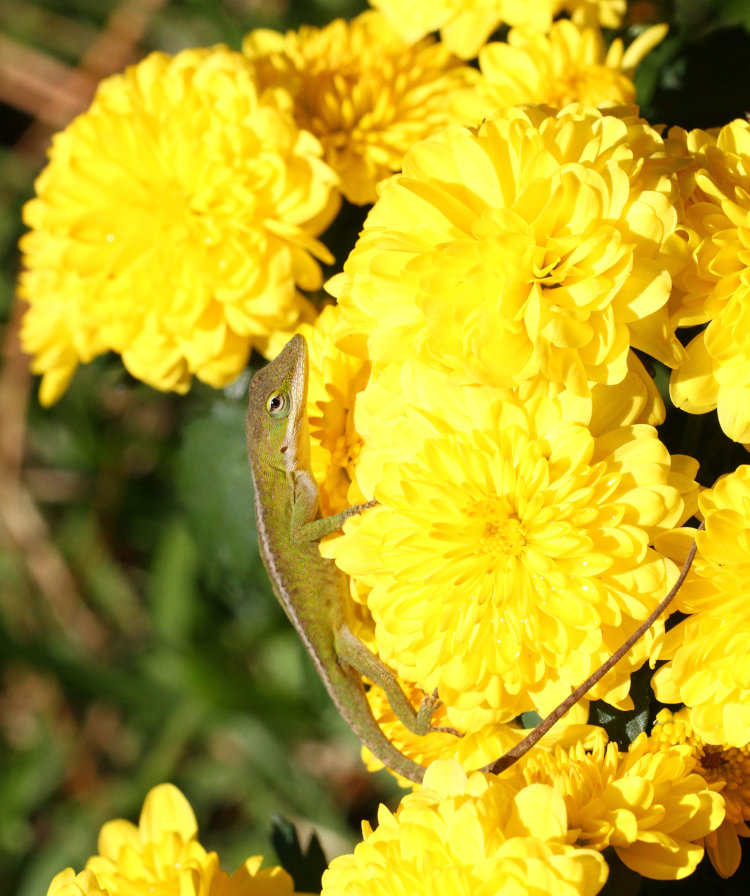
It was aware of my presence, but only as spooky as they normally are, which wasn’t much; as long as I didn’t get too close or loom or anything, it was willing to ignore me, and occasionally pose.
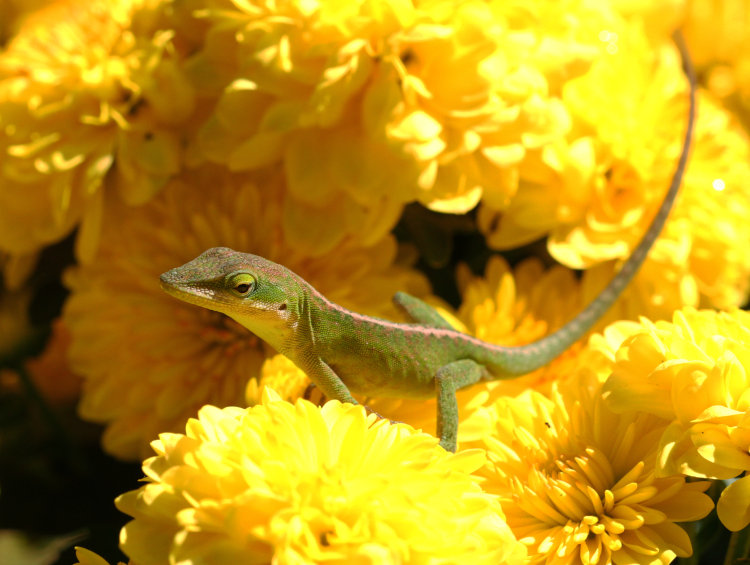
It certainly had the right idea, because the flowers were being routinely visited by numerous small pollinators, just the right size to make a mouthful, and as I took a seat to watch the anole’s perambulations among the blooms, I saw the it scamper suddenly just out of sight for a moment, before reappearing with a capture.
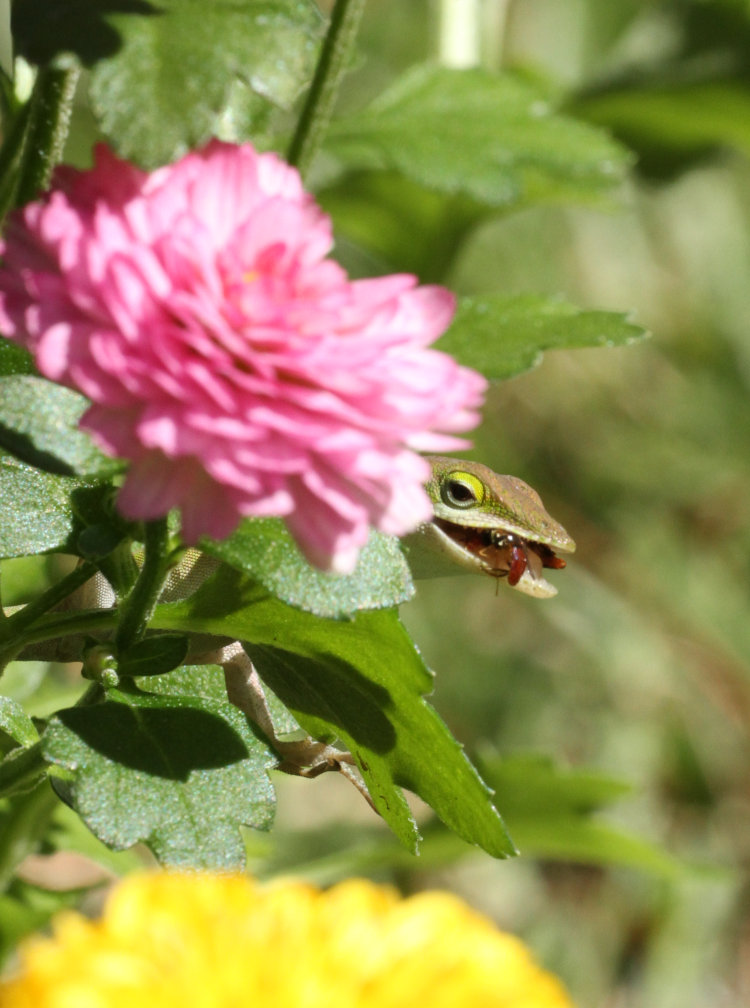
It could easily have remained out of sight, so I have to consider this professional courtesy. These captures, which I’ve only witnessed just a few times, happen quite fast and even on video there might not be much to see – I’d probably have to go with a high-speed shutter to see anything more than a few milliseconds of action. Once they snag something, however, they might spend five to thirty seconds working the meal around until it can be swallowed, and I don’t know how much of that is actually chewing the meal into acceptable condition, though I’ve gotten the impression that it’s more getting it into the gullet in the right orientation. Which this wasn’t:
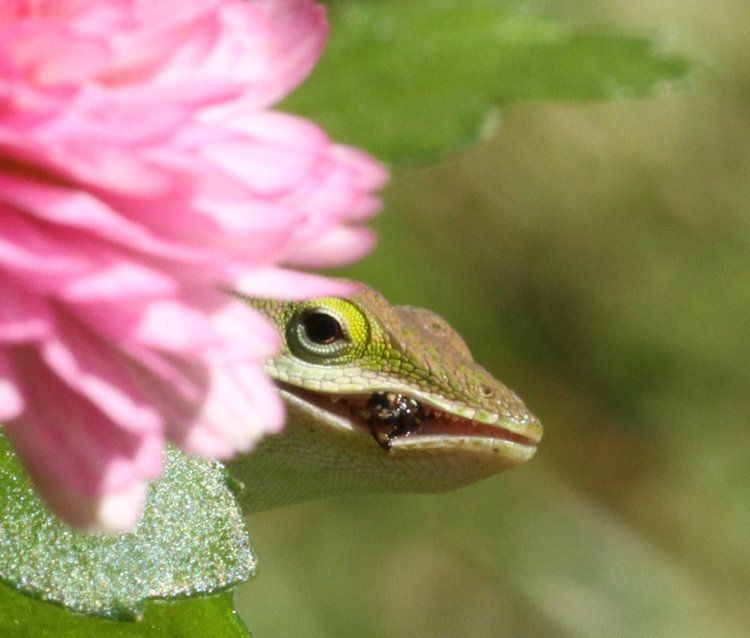
You have to appreciate the cigar-chomping, Edward G. Robinson aspect here (why I named the image HeyYouMugs.jpg,) and of course the tiny little teeth, which I’m fairly certain are only there to help keep the prey from escaping.
That wasn’t enough to sustain the little lizard (only about half of adult size) for long, and it quickly resumed the hunt, disappearing and reappearing among the flowers, on occasion seeming to be trying to avoid my attentions, and at others brazenly tramping right across the tops.
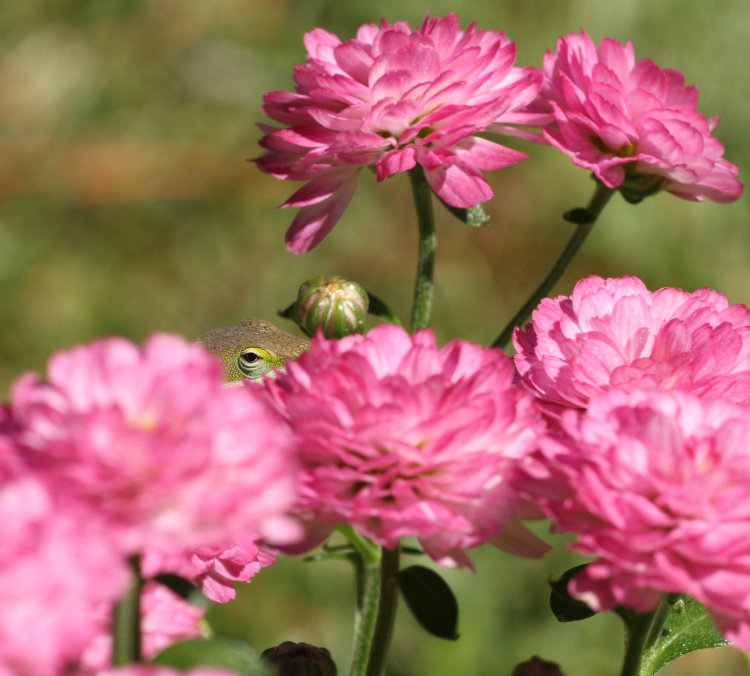
Of course, I took the opportunities for some fartsier images when they happened.
Curiously, the anole also took an interest in a small wasp that came around, which I would have thought it might avoid.
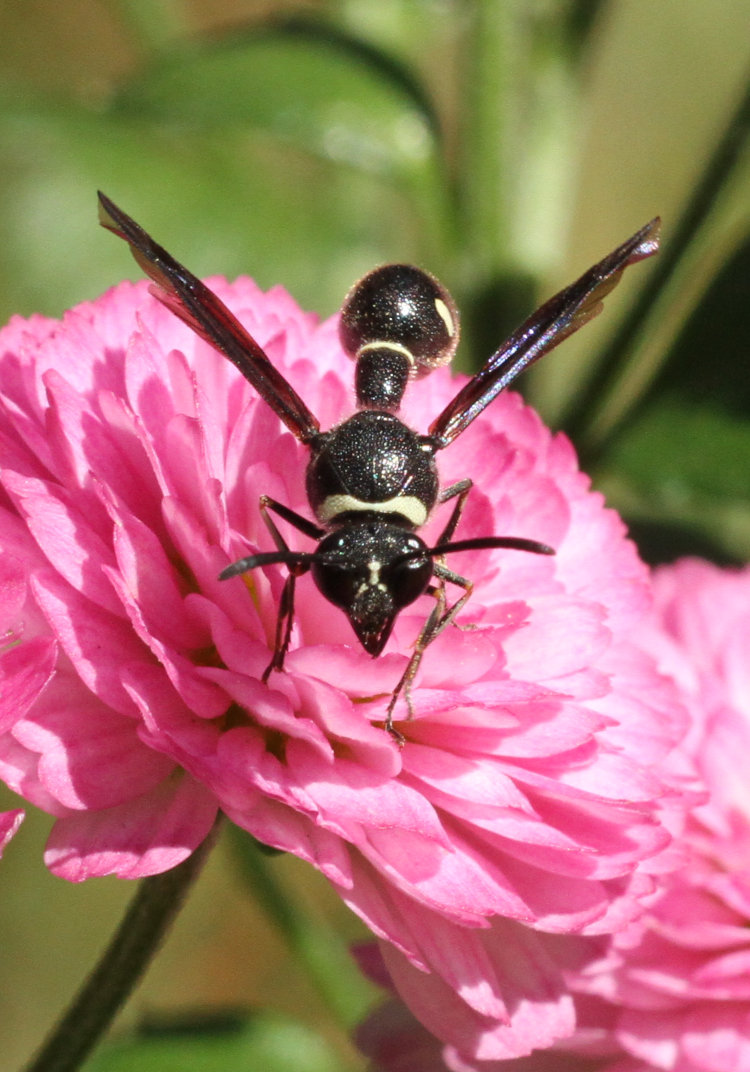
Unfortunately, BugGuide.net doesn’t have enough keywords attached to their images to make searching more efficient – it usually finds matches through post titles or text – so I had to find this one through the Ecosia search engine. This is a fraternal potter wasp (Eumenes fraternus,) quite small as far as wasps go and so possible for a medium-sized anole to gulp down – I just would have though that it would be avoided because of the possibility of being stung. Perhaps the anoles are relatively immune to the venom, or knows it’s weak for this species, or are adept enough at capturing to avoid the stinger until the wasp is incapacitated, but the anole was definitely creeping in for the capture before the wasp uncooperatively flew off. While I was on BugGuide, I discovered that these are the species that make the little (6-10mm) clay pots that I see from time to time, as nurseries for their young, and since I knew where an old one was I got an image of this just to illustrate:
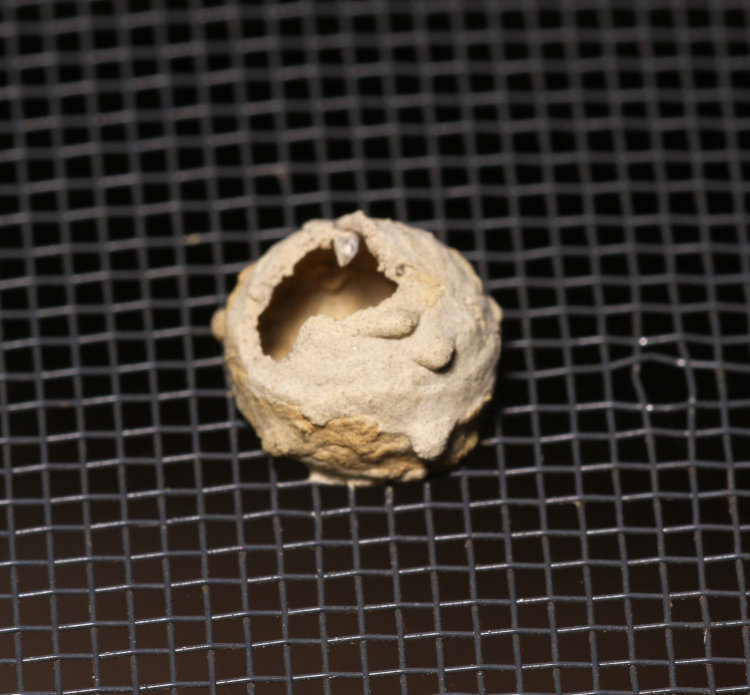
This one has already hatched, so it’s missing the distinct neck that they have – I’ll find another before too long.
I eventually abandoned my observations of the anole on the mums, but the next day, we found that another had joined in on the hunt, and the two anoles didn’t seem at all concerned with one another’s presence, no territorial warnings or anything, so I’m guessing at least one of these is a female.
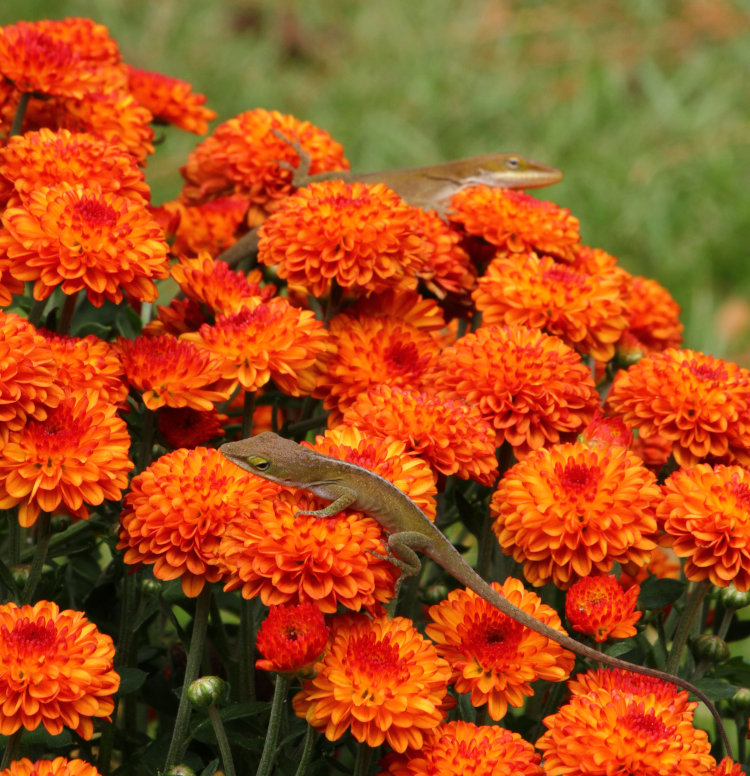
The one in the back was pretty mellow, barely moving at all, while the one in front was actively patrolling each of the plants that we had. Soon after this, it reversed direction because it saw a potential meal on one of the yellow ones.
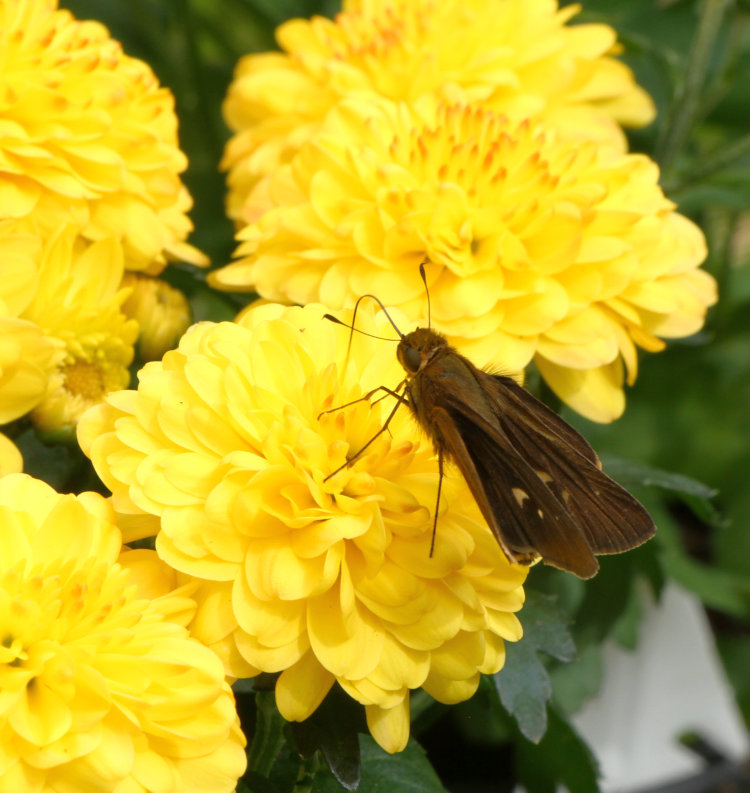
There are far too many of these kinds of butterflies with very subtle differences in markings, and I failed to obtain enough images to differentiate, so all I can say is this is a variety of skipper – which is fun in itself. This is – get ready – Order Lepidoptera, Superfamily Papilionoidea, Family Hesperiidae, Subfamily Hesperiinae, Tribe Hesperiini, and Subtribe Hesperiina. Seriously, that’s enough to get an entomologist all sweaty. The front anole spotted it and began stalking its way across the mums in pursuit, providing a nice pose along the way:
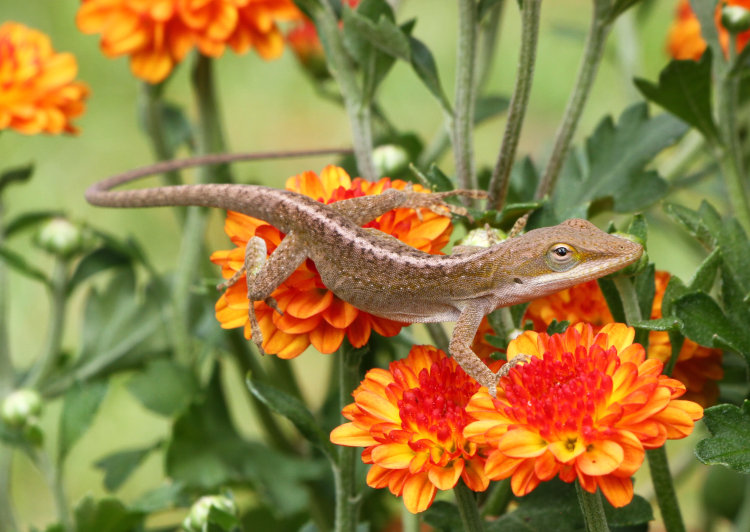
The light was softer that day, heavy haze, and so the catchlight in the anole’s eyes isn’t a sharp dot, but a reflection of the greater sky (potentially blocked by me and the camera.)
Unfortunately, it was a little too eager, the skipper a little too alert, and as the anole closed in, the skipper sailed off and avoided becoming a meal, leaving the anole there looking at the empty blossoms for a moment.
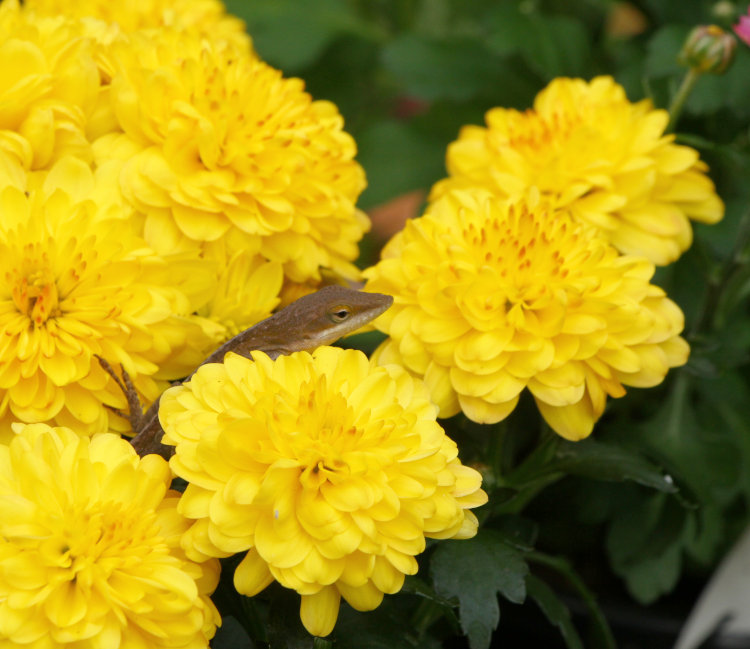
But the saga wasn’t over yet. The anole climbed atop the same two blossoms seen at lower left and took up its position, remaining motionless but alert. And within a minute or so, a skipper returned (same one? I have no way of telling) and alighted in what can only be described as a taunting and disrespectful manner:
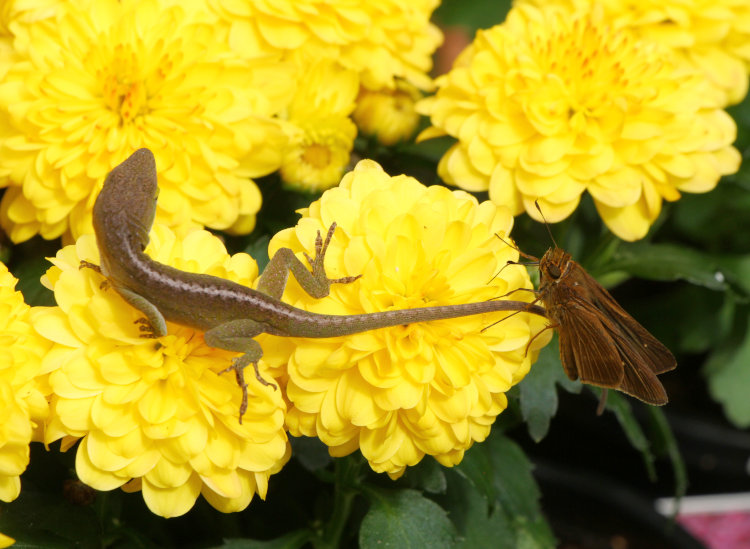
While I am 90% certain that the skipper simply didn’t recognize that the danger was there, likely only alerted to movement (which is how ambush spiders eat so easily even when failing to blend in with the flowers,) this put the anole in a predicament: a meal so tantalizingly close, yet behind it and easy to be disturbed by any movement of the anole’s tail. This would take finesse.
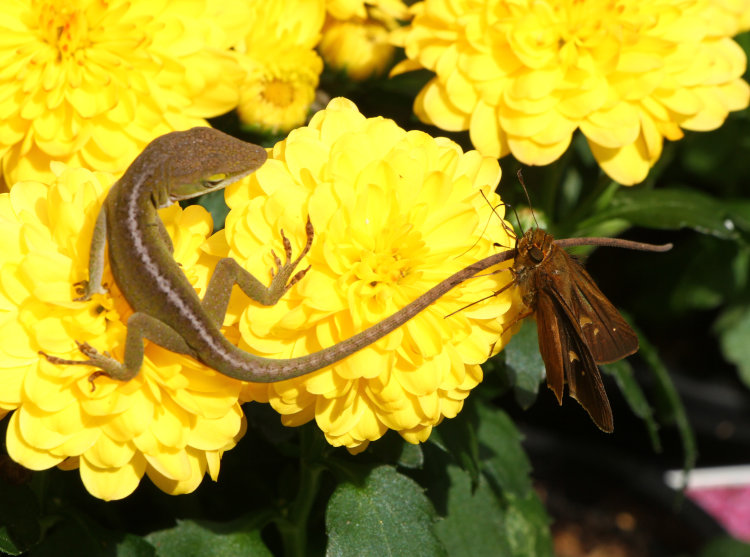
Careful now – slowly, slowly – no sudden movements until ready to leap…
I’d actually switched to video at this point, but the anole wasn’t aware enough of its tail and moved it laterally instead of just sliding it forward, which the skipper might have missed. But likely, the tail touched a leg and the skipper was off before the anole was even ready to leap, and so the clip is a few seconds long and not worth the effort of editing. Had it been of a successful capture, that would have been different.
I know, I know, I’m showing my bias by favoring the death of the skipper over its deft escape – the lepidoptera always get the short end of the stick. But let’s be real: a lot more people would say, “Oh, yuck, a lizard!” than, “Oh, yuck, a butterfly!” so where’s the bias now, huh?
Okay, fine. To make it up to you (and because I have no other place to put this and it would sit in the blog folder for a long time,) we’ll have another from later that evening. I’d been seeing these little butterflies perched somewhat prominently at night, usually on the Japanese maples, and finally decided to get an image of the patterns on the underwings.
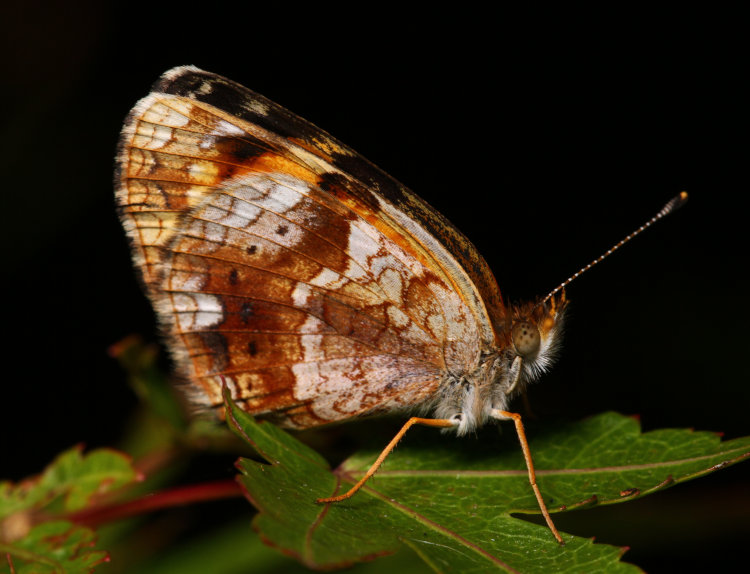
Now, this was a challenge to identify. I mean, what do you search under? “Map pattern butterfly”? (Which I did try.) “Scribbled”? “Graffiti”? Feel free to enlighten me as to how to describe that pattern, though I did eventually locate it through a lot of image searching – only to be surprised at the result, since it’s an exceedingly common butterfly that I’ve photographed many times before, one of the crescents (Genus Phyciodes.) I’d just never seen the undersides of the wings before; they alight during the day with the wings remaining splayed and down, only holding them vertically at night. Both patterns are cool, you must admit, but the topwing is easier to search for. And after finding this identification, I was compelled to confirm it, and the next night I found another sleeping and nudged it until it dropped its wings momentarily, confirming that stippled orange-and-black pattern.
Okay, that’s out of my system. I’ll try to keep it a few days before I feature the anoles again.



















































